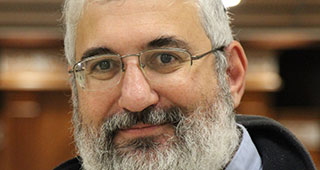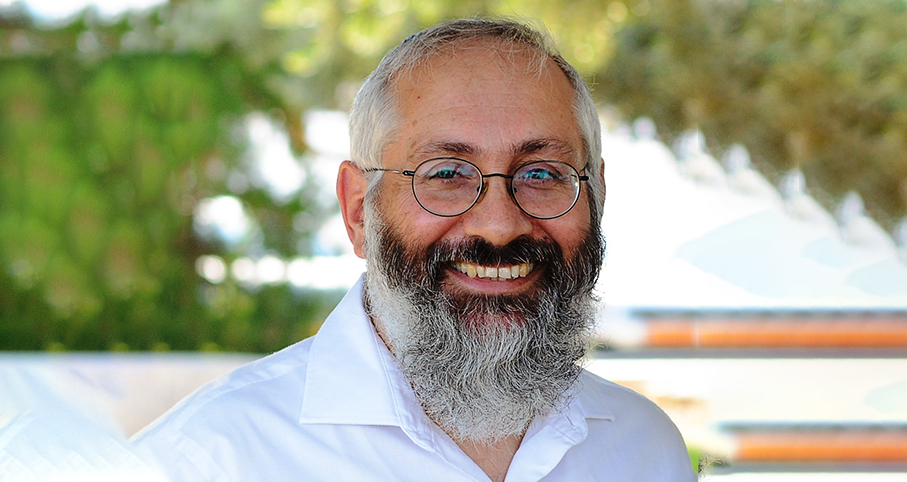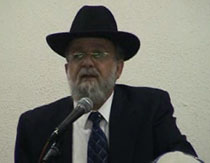Beit Midrash
- Shabbat and Holidays
- Jewish Holidays
- Sukkot
The Torah study is dedicatedin honor of
Amram Hayun
"... Hapores succat shalom aleinu v'al kol amo Yisroel V'al Yerushalyim" [Gd] spreads His canopy of peace ("succat shalom") over us, over all His people Israel, and over Jerusalem."
The more something is holy, the greater is the need for peace. The forces of non-holiness do not sanction the presence of holiness, and constantly do battle against her. The Jewish people are the bearers of holiness in this world, and therefore this people are constantly subject to attack. We are part of the the holy people; the Land is the holy land; Jerusalem is the holy city. All three, in an upward trajectory of holiness, are historically the object of the brutishness of the non-holy forces in the world.
Therefore, all three urgently require the succa of Gd's loving protection and the wholeness that is the true meaning of shalom. Perhaps this is why the reference to the "succa of peace" is found three different times in this brief paragraph: one for each of the holinesses in this world, and it explains why shalom is a word constantly stressed in our davening, from the last phrase in the kaddish, to the last beracha in the Amidah, and numerous times in between.
One salient question emerges from the succat shalom blessing: what is the connection between a succa and shalom?
A succa, after all, is a thatched roof that does not even keep out the rain. In fact, if it does keep out the rain, it might well be an invalid succa, because the roof of a succa must by definition be temporary and not permanent - a 'dirat ara-I'. What is the connection between an impermanent covering above our heads, and shalom?
The answer might lie in the fact that an impermanent roof allows us to look upward and, symbolically, to see the heavens, and it allows the heavens to enter, as it were, our own dwelling. In a succa, we are not shut off from the One Above, and the One Above is symbolically invited to enter our abode. A succa thus represents the connection between the
lower and the upper worlds, the life-line between man and Gd.
Succot is the time when we abandon our permanent homes and choose to live in a temporary dwelling for a full week. By so doing, we express our faith that our lives and our security do not depend on impregnable dwellings or fortresses. On the contrary, our lives and security depend on being in contact with the One Above, and when we are truly connected with Him, we are guaranteed peace and security. Without that connection, even powerful ramparts and barricades cannot give us the peace we so fervently desire. Lo bechayil velo
bekoah.... "not by might nor by strength but by My spirit," says the prophet Zechariah ( 4:6).
The Succot Yom-Tov thus represents true peace, the peace that is granted to us from above, and that enables us to see Him and invites Him to enter our lives. Yes, we must be physically strong, and we must be able to defend ourselves and repel our enemies by force. But in the midst of the physical defences, we must bear in mind that true peace is a gift from Gd, does not depend on our own selves, and ultimately results from our devotion and attachment to Him and to His ways.
May we be worthy of Gd's canopy of peace over all of us.
--------------------------
This is a weekly column contributed by Aloh Naaleh an organization devoted to motivating Jews to make Aliya.
Aloh Na'aleh
POB 4337, Jerusalem 91042
Tel: 972-2-566-1181 ext. 320 ~ Fax: 972-2-566-1186
Email: [email protected]
The Day The Music Died
Rabbi Yaakov Asher Sinclair | Tishrei 13 5782

What Are the Laws & Customs of the Upcoming Sukkot Holiday?
Rabbi Stewart Weiss | Tishrei 9 5782

Laws of the Etrog
How to choose an Etrog
Rabbi Ido Yaakovi






















